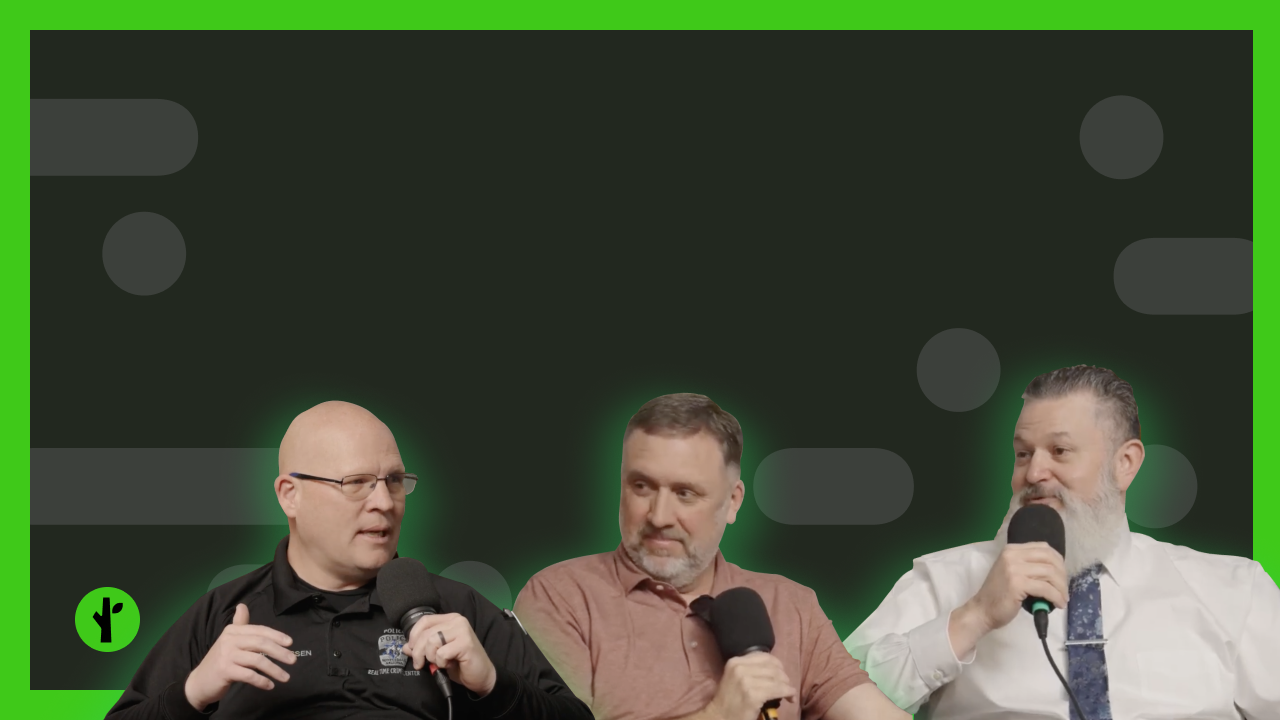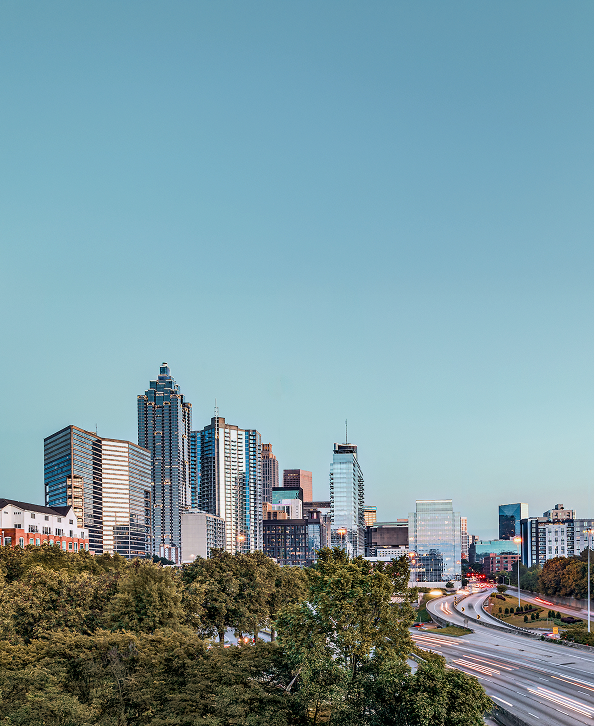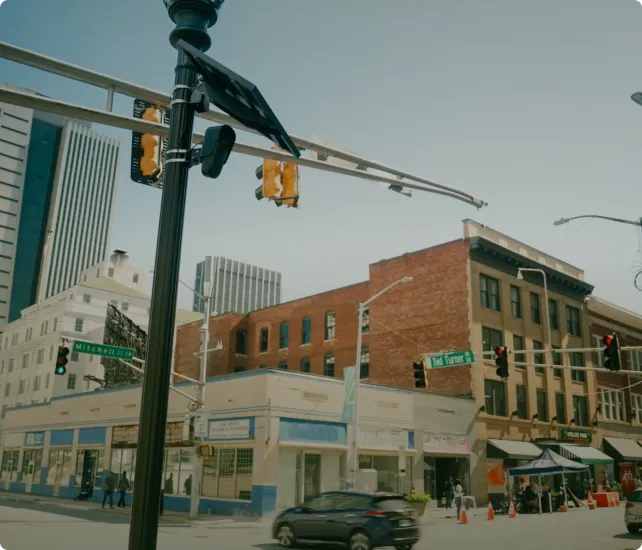


Inside Scottsdale’s Real Time Crime Center: A Model of Modern Policing
Discover how the Scottsdale PD is operating at the forefront of modern policing with intelligent tech.
At the heart of Scottsdale, Arizona, a revolution in public safety is unfolding—one driven by real-time intelligence, community partnerships and a visionary approach to policing. In a candid, often humorous, and deeply insightful conversation, Chris Henningsen, Real Time Crime Center (RTCC) Manager at Scottsdale Police Department, sat down with hosts Jamie and Dalton to discuss the evolution of real-time policing, the formation of a national association, and the future of law enforcement technology.
A Mission Born in a Pandemic
The Scottsdale RTCC began its journey in a year marked by global uncertainty: 2020. With COVID-19 limiting travel and in-person collaboration, Henningsen and his team pivoted to virtual meetings with agencies nationwide. This remote strategy ironically yielded even richer collaboration than traditional tours would have allowed.
“That period laid the groundwork not just for our center, but for the National Real Time Crime Center Association (NRTCCA),” Henningsen recalls. Co-founded with fellow real-time policing advocates like Jamie and Dalton, the association became a collaborative nexus for agencies nationwide.
Building the RTCC, One Step at a Time
What started with a laptop, a radio and a part-time idea quickly became a full-time operation. Henningsen’s strategy? Prove the need before building the infrastructure. Within months, the center grew, staff were added and technology expanded—including a Drone as First Responder (DFR) program. The RTCC now routinely hosts over 250 visiting agencies a year.
According to Henningsen, one of the keys to success is full-spectrum buy-in: from command staff down to field officers. Scottsdale’s leadership not only supported the center’s creation but actively encouraged innovation. “The most successful centers have leadership that shows up monthly, not just for annual check-ins,” he emphasized.
Real-Time in Real Life
Scottsdale’s RTCC isn’t just about cameras and dashboards. It’s a dynamic space where frontline policing meets modern technology. Their “open-door policy” invites patrol officers into the center, demystifying tech tools and encouraging cross-functional understanding.
A standout example: a Scottsdale PD Lieutenant frequently runs operations from the RTCC, directing patrol resources across the city using a bird’s-eye view of real-time data. This model blends command presence with tech-enhanced situational awareness, turning the RTCC into a true operations hub.
Technology, Transparency and Trust
Despite working with a variety of accessible cameras and a growing network of license plate readers, Scottsdale’s RTCC remains grounded in transparency. None of the infrastructure is owned by the center; instead, it’s leveraged through partnerships with city agencies and private stakeholders.
“We’re all about transparency—community partners, elected officials, city management—they all come through our center,” Henningsen said.
“And when they do, their perceptions change. They realize we’re not the Big Brother from movies. We’re a team responding to real incidents in real time.”
Regional Collaboration: A New Model for Policing
Scottsdale isn’t operating in a vacuum. Since 2021, the number of RTCCs in Arizona has grown from two to nearly 20, forming a regional safety net. Data and insights are shared fluidly between jurisdictions, enabling agencies to maintain continuity in investigations and patrol support across borders.
Special events like the Phoenix Open push the RTCC into overdrive. During these weeks, the team expands to near round-the-clock operations, splitting efforts between geographic command centers to maximize response times and efficiency.
Lessons from the Field
Henningsen’s team started inside Scottsdale’s communications center, a strategic choice that allowed real-time coordination with dispatchers. That proximity fostered mutual understanding and smoothed the transition into independent operations. And when they moved out, they replicated that synergy with a custom alert system—a digital “dinner bell” to signify high-priority calls.
This careful calibration of technology and human relationships extends to interdepartmental collaboration. Regular meetings with traffic management and dispatch managers ensure alignment on mission goals and upcoming initiatives.
Looking Ahead: A Future Built on Community and Competition
Where does Henningsen see RTCCs in the next 3–5 years? Everywhere. “Every agency, regardless of size, should have a real-time center or access to one regionally,” he stated. Importantly, he stresses avoiding monopolization in law enforcement tech: “We want multiple technology partners to remain competitive and collaborative.” (Read more on Flock's view on vendor competition here.)
National events like the Super Bowl and the Olympics present opportunities for interstate RTCC partnerships. As Henningsen puts it, “We need to think nationally, not just locally.”
The NRTCCA Conference: A Must-Attend
For agencies looking to start or evolve their real-time centers, the NRTCCA annual conference is becoming a marquee event. From small departments to city managers and mayors, the conference bridges gaps between tech, operations and policy.
“What’s wild,” Webb observed, “is how quickly it grew. We went from a room of 120 people in Elk Grove to nearly 1,000 in New Orleans.”
Final Thoughts: A Family, Not a Function
As Hudson aptly summarized the episode:
“It’s just a fun space to be in—but also a stressful one. The key is navigating it together.”
Throughout the conversation, what stood out most was the sense of camaraderie. The hosts and guest shared a deep appreciation for the community they’ve built.
To learn more about real-time crime centers or to get involved with the National Real Time Crime Center Association, visit nrtccaconference.org.
To learn how to develop your own RTCC, check out “How to Develop a Level 1 Real-Time Crime Center.”
Explore More





Contact us
Discover how communities across the country are using Flock to reduce crime and build safer neighborhoods.

.webp)









